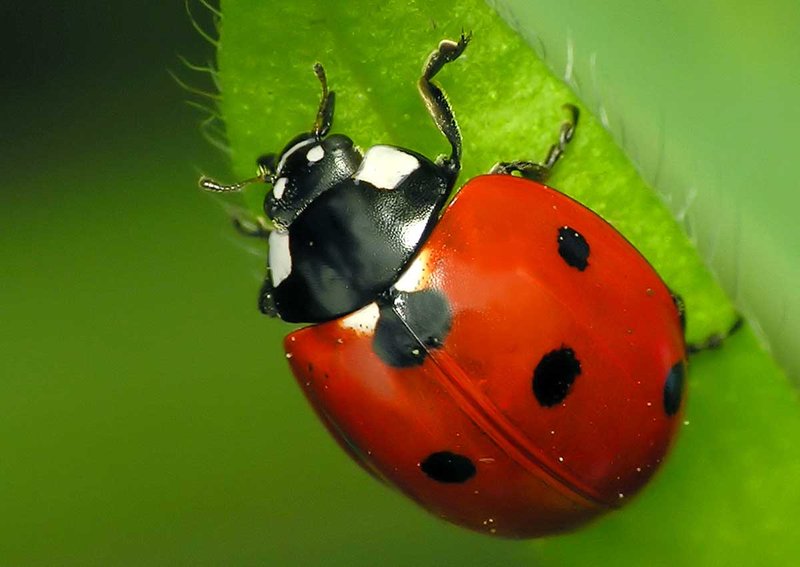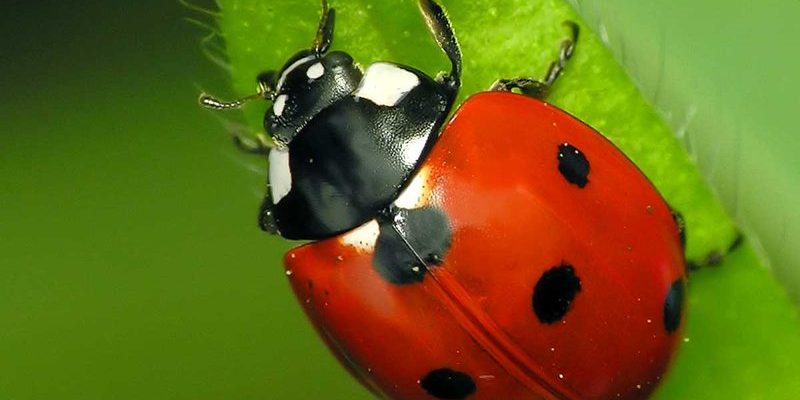
So, why are ladybugs so significant to scientists? Well, they serve as excellent indicators of environmental health, and their behaviors can shed light on broader ecological patterns. As researchers pull apart the layers of ladybug life, they also uncover clues about insect interactions, plant life, and even climate change. As we explore how ladybugs have been studied, you’ll see just how intricate and essential these tiny creatures are in the grand scheme of nature. Grab a cup of coffee, and let’s dive into the world of ladybug research.
The Basics of Ladybug Biology
Ladybugs belong to the family Coccinellidae, which includes about 5,000 species worldwide. You might be surprised to learn that these little beetles are not just cute; they play a vital role in controlling harmful pests. *Adult ladybugs and their larvae feast on aphids, spider mites, and other small insects*. This appetite makes them a gardener’s best friend—not to mention a natural method of pest control.
One intriguing aspect of ladybug biology is their life cycle. They undergo complete metamorphosis, which means they start as eggs, hatch into larvae, pupate, and then emerge as adults. Each stage of their life is critical for their survival. For instance, the larvae, often mistaken for tiny alligators, are voracious eaters. *In fact, a single larva can consume over 400 aphids in its lifetime.* This predation behavior is a primary reason why scientists focus on understanding ladybugs—they help maintain a balance in their ecosystems.
Moreover, the striking colors and patterns of ladybugs serve an important purpose. Their bright hues act as a warning to predators, signaling that they’re not a tasty snack. Some species even secrete a foul-tasting chemical to deter would-be hunters. This fascinating interplay between survival and adaptation keeps ladybugs in the spotlight among researchers.
Research on Ladybug Habitats
Understanding where ladybugs thrive can reveal a lot about their lifestyle. Scientists have studied various habitats, from urban gardens to wild grasslands, to see how environmental changes influence ladybug populations. You might be surprised to learn that *ladybugs prefer environments with plenty of plant diversity*. This diversity provides not only food but also shelter from predators.
Research also indicates that urbanization affects ladybug populations. In cities, these insects might struggle to find suitable habitats due to a lack of plants and green spaces. Scientists often conduct field studies to compare populations in urban versus rural settings. *By examining the differences, researchers can identify crucial conservation needs.* For example, planting native plants in urban areas can help ladybug populations flourish, benefiting the ecosystem overall.
This research isn’t just academic; it has practical implications. Understanding ladybug habitats can aid in agricultural practices. Farmers can implement strategies to create ladybug-friendly environments, which can reduce reliance on chemical pesticides and promote sustainable farming.
The Role of Ladybugs in Pest Control
One of the most captivating reasons scientists have studied ladybugs is their role in pest control. Think of them as tiny, effective bodyguards for our gardens and crops. A single ladybug can eat up to 50 aphids a day, helping to keep pest populations in check. This natural pest control makes them invaluable, especially in organic farming.
Research has focused on maximizing ladybug efficiency in agricultural settings. Scientists have explored when and where to release ladybugs to combat pest outbreaks. They look at factors like *temperature, humidity, and the presence of host plants* to ensure ladybugs can thrive and effectively manage pests. Studies have shown that releasing ladybugs at specific times can significantly improve crop yield and health.
Moreover, the integration of ladybugs into pest management strategies is not just about effectiveness; it’s also about sustainability. By promoting natural predation through ladybugs, farmers can reduce their need for chemical pesticides. This not only benefits the environment but also results in healthier food for consumers. With growing interest in sustainable practices, the focus on ladybugs is more relevant than ever.
Studies on Ladybug Behavior
Ladybugs are not just passive creatures; they exhibit interesting behaviors that researchers have sought to understand. For example, scientists have studied their mating rituals, which can be quite elaborate. Female ladybugs often choose mates based on their size and the quality of the territory they offer. This kind of selective behavior is crucial for their reproductive success.
Another fascinating behavior is how ladybugs communicate. Although they don’t speak like us, ladybugs can send signals through chemical cues (pheromones). These chemicals help them find mates, mark territory, and even warn each other of danger. Research in this area can provide insights into how ladybugs interact with one another and their environment.
Moreover, studies have examined how ladybugs respond to environmental stressors, such as climate change. Researchers have observed changes in their behavior and distribution patterns as temperatures fluctuate. This research is vital, as it can help scientists predict how other species might respond to climate changes, influencing conservation strategies in the long run.
The Importance of Ladybug Conservation
As cute as ladybugs are, they face threats from habitat loss, pesticides, and climate change. Scientists and conservationists are increasingly concerned about their declining populations. To combat this, research has become focused on conservation strategies that promote ladybug health and populations.
One effective strategy is *creating and maintaining habitats*. Planting native flowers and reducing pesticide use not only helps ladybugs but also supports a wide range of beneficial insects. Studies show that these efforts can revitalize local ecosystems while promoting biodiversity.
Additionally, conservationists urge public awareness about the benefits of ladybugs. By sharing their ecological importance, they can inspire communities to take action. Educational programs teach people how to attract ladybugs to their gardens, which can positively impact local pest control efforts.
By working together, we can ensure that ladybugs continue to thrive. Their presence is more than a pretty sight; it signifies a healthy ecosystem.
Future Research Directions
The study of ladybugs is far from over. As scientists continue to explore their biology, habitats, and roles in ecosystems, exciting discoveries await. Future research may focus on how ladybugs adapt to rapidly changing climates. Understanding these adaptations is critical for anticipating the ecological shifts that may occur in the coming years.
Moreover, researchers might delve deeper into the genetic makeup of ladybugs. Genetic studies can unveil new insights about their evolution, behavior, and resilience. With advancements in technology, scientists can analyze genetic variations, helping to inform conservation strategies and monitoring efforts more effectively.
Finally, there’s a growing interest in utilizing ladybugs in integrated pest management systems, especially with organic farming on the rise. Studying their behaviors and interactions with other species will help refine these methods and enhance their effectiveness, contributing to sustainable agriculture practices.
In closing, the study of ladybugs is a reminder of the intricate connections in our natural world. These tiny beetles hold secrets to ecological balance and offer solutions to modern challenges in agriculture and conservation. As we learn more about them, we also gain valuable insights into the health and future of our planet.

